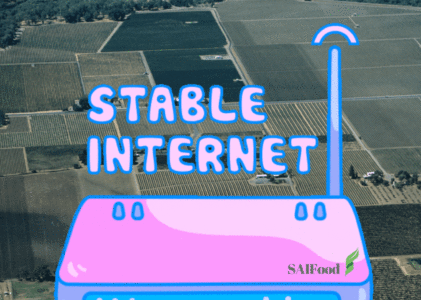By Jonathan Guidinger
University of Saskatchewan Student
Internet access is an essential tool for Canadians
The quality and accessibility of broadband internet have been a (un)popular topic among farmers and rural communities. Despite being highlighted in 2021 by the new norms of working and attending school virtually, the issue of rural connectivity was addressed several years ago. In 2016, the Canadian Radio-television and Telecommunications Commission (CRTC) declared broadband internet a basic telecommunications service – deeming it equally important as telephone service (Kupfer, 2016). Following this announcement, the CRTC established an objective that would ensure all Canadians could participate in a digital society. This objective would be measured by the number of Canadians with access to internet speeds of 50 megabits per second (Mbps) download and 10 Mbps upload (CRTC, 2021). Internet speeds of 50/10 Mbps are considered fast enough for streaming, cloud applications, and simultaneous use from multiple members in one household. Yet, in 2021, only 45.6% of rural communities in Canada have 50/10 Mbps (CRTC, 2021).
From an agricultural perspective, Saskatchewan farmers may argue poor connectivity has a negative effect on economic growth and business opportunities (Sterling, 2020). As agricultural technology improves, broadband internet has become an everyday tool for agricultural producers. From precision mapping, machinery guidance, and monitoring for machinery malfunctions, the internet has improved the way people farm in countless ways. Without access to high-speed internet, farmers lose the opportunity to take full advantage of the technologies available to them (APAS, 2021). A study conducted in 2019 by the consulting and strategy firm Accenture, places a numerical value on this missed opportunity. Their study concludes that Saskatchewan’s industries could generate an additional $1.2 billion in GDP each year with adequate broadband in rural areas (Accenture, 2019). With five major funding programs improving Canadian connectivity through a combined $8 billion investment, the additional GDP generated by Saskatchewan alone could pay for these programs in just under seven years – emphasizing that the return on connecting Canada is both worthwhile and affordable (APAS, 2021).
The business behind rural connectivity
It is best to study the economics of the internet industry to understand the problem. Rural areas with low population densities cannot create enough revenue to cover the costs of building and maintaining the services that provide internet, ie: cell towers, satellites, and additional fibre optic or copper cables (APAS, 2021). The cost of this infrastructure pushes internet service providers to prioritize urban centers over rural communities. In an industry dominated by big players (Telus, Rogers, and Bell), consumers are left with few options and end up paying high fees for inadequate service (APAS, 2021). Therefore, smaller internet service providers who see rural areas as attractive could become crucial players in helping establish connectivity. By entering rural markets and creating competition, smaller providers have the ability to lower prices for consumers and generate both investment and innovation in these areas.
A call to action for connecting rural communities
It is time for the government to deliver on its objectives and connect rural communities throughout Canada – we know it can be done. In Denmark, all citizens were projected to have 100 Mbps by 2020 – service levels better than Canada’s (APAS, 2021). Surpassing that benchmark, South Korea, a leader in connecting its population, has achieved 100 Mbps for all residents and up to 1 Gigabit for urban residents. With government programs like ‘Connect to Innovate’, a program investing $585 million by 2023 to connect schools and hospitals in remote areas, there is $8 billion in connectivity funding available (Government of Canada, 2021). With funding accessible, the government can build and maintain the needed infrastructure to support these communities. Paired with policy to share infrastructure and allow smaller providers to enter and compete with industry leaders, a strong case for affordable connectivity becomes a reality (APAS, 2021).
As the pandemic and improvements in technology continue, the need for connectivity has never been more apparent. The benefits of internet service now touch all areas of our lives – access to healthcare, virtual business, and learning and sustaining relationships with distant family and friends. The faster that all Canadians are connected, the sooner we can all enjoy the benefits that broadband connectivity has to offer.
Accenture. (2019). Accelerating 5G in Canada. Benefits for cities and rural communities. Accenture. Retrieved October 6th, 2021 from https://www.accenture.com/_acnmedia/PDF-112/Accenture-Accelerating-5G-in-Canada-PoV-2019.pdf#zoom=50
Agricultural Producers Association of Saskatchewan. (2021, March 31). Rural Connectivity Task Force. Retrieved October 8th, 2021 from https://apas.foleon.com/rural-connectivity-task-force/rural-connectivity-task-force/rural-connectivity-task-force/
Canadian Radio-television and Telecommunications Commission. (2021, August 4). Broadband fund. Closing the digital divide in Canada. Government of Canada. Retrieved October 9th, 2021 from https://crtc.gc.ca/eng/internet/internet.htm
Government of Canada. (2021, June 11). About the connect to innovate program. Retrieved October 6th, 2021 from https://www.ic.gc.ca/eic/site/119.nsf/eng/00001.html#s2
Kupfer, M. (2016, December 22). Canada’s telecom regulator declares broadband internet access a basic service | CBC News. CBCnews. Retrieved October 11, 2021, from https://www.cbc.ca/news/politics/crtc-internet-essential-service-1.3906664.
Sterling, C. (2020, November 26). Better broadband would help Sask. The Western Producer. Retrieved October 10, 2021 from https://www.producer.com/opinion/better-broadband-would-help-sask/
Jonathan Guidinger

Jonathan grew up on a grain farm located a few miles southwest of Eatonia, Saskatchewan and began partaking in his family farming operation at a young age. Following his high school graduation, Jonathan completed a Bachelor of Commerce degree at the University of Calgary where he ran competitively for the Dino’s Track & Field and Cross-Country teams during this time. His time spent in Calgary led Jonathan to realize that his passions and interests lie in the field he was fortunate enough to be raised in. So he returned home to continue his studies through the Agribusiness Diploma at the University of Saskatchewan. Jonathan states that “agriculture always has been and will remain a significant part” of his life and he is excited for the opportunity to continue as a professional in the field upon graduation this upcoming spring.


